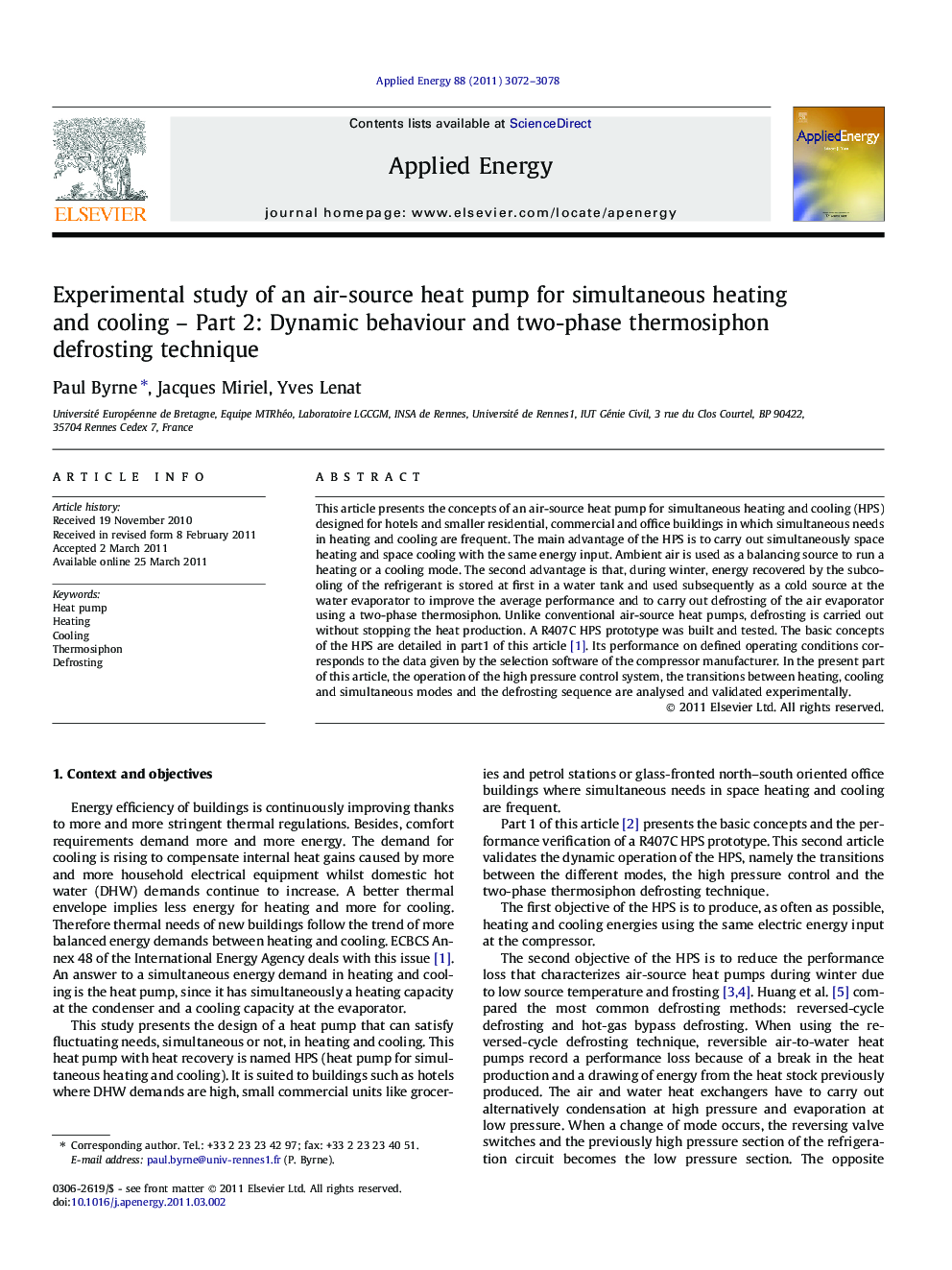| Article ID | Journal | Published Year | Pages | File Type |
|---|---|---|---|---|
| 243779 | Applied Energy | 2011 | 7 Pages |
This article presents the concepts of an air-source heat pump for simultaneous heating and cooling (HPS) designed for hotels and smaller residential, commercial and office buildings in which simultaneous needs in heating and cooling are frequent. The main advantage of the HPS is to carry out simultaneously space heating and space cooling with the same energy input. Ambient air is used as a balancing source to run a heating or a cooling mode. The second advantage is that, during winter, energy recovered by the subcooling of the refrigerant is stored at first in a water tank and used subsequently as a cold source at the water evaporator to improve the average performance and to carry out defrosting of the air evaporator using a two-phase thermosiphon. Unlike conventional air-source heat pumps, defrosting is carried out without stopping the heat production. A R407C HPS prototype was built and tested. The basic concepts of the HPS are detailed in part1 of this article [1]. Its performance on defined operating conditions corresponds to the data given by the selection software of the compressor manufacturer. In the present part of this article, the operation of the high pressure control system, the transitions between heating, cooling and simultaneous modes and the defrosting sequence are analysed and validated experimentally.
► Experimental study of an air-source heat pump for simultaneous heating and cooling. ► Operating sequences alternating between heating, cooling and simultaneous modes. ► Validation of the high pressure control system. ► Validation of the non-penalizing two-phase thermosiphon defrosting sequence.
